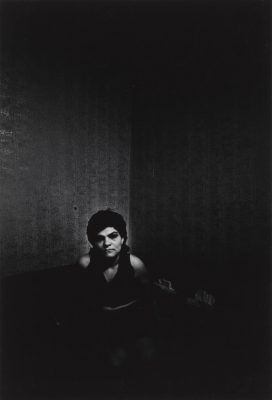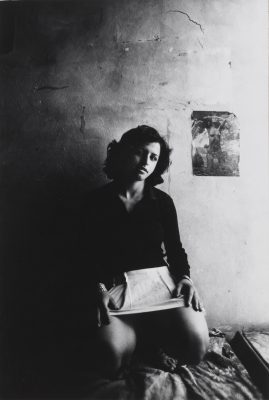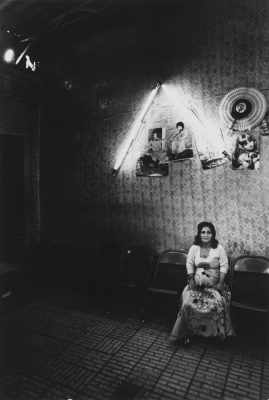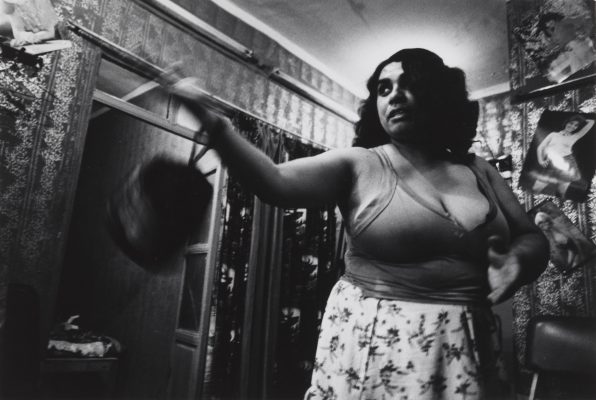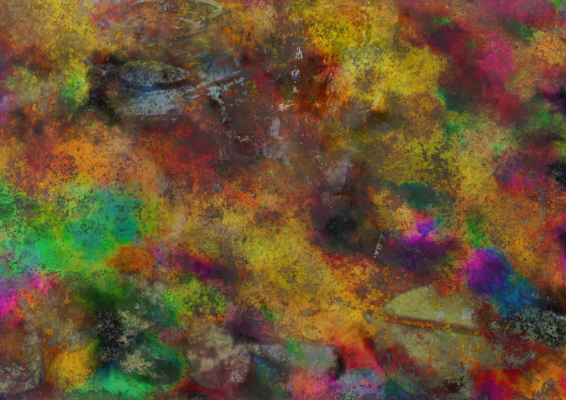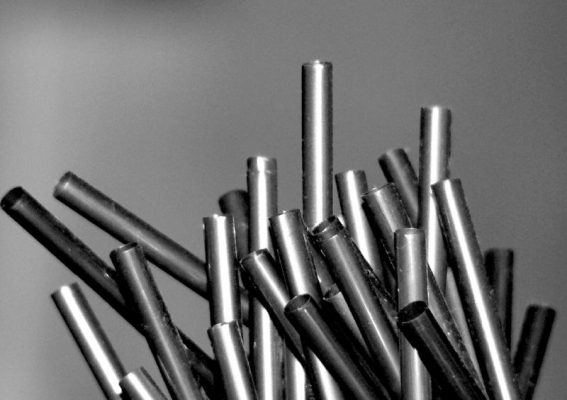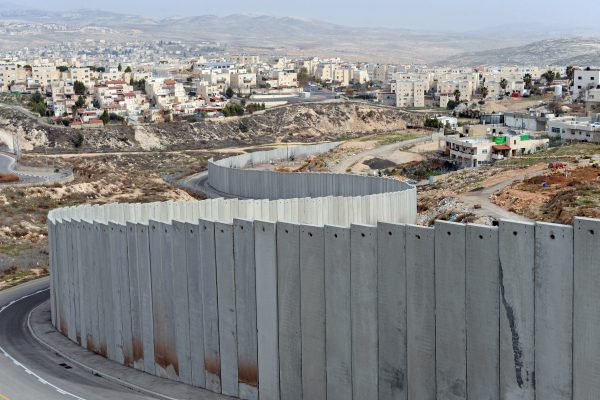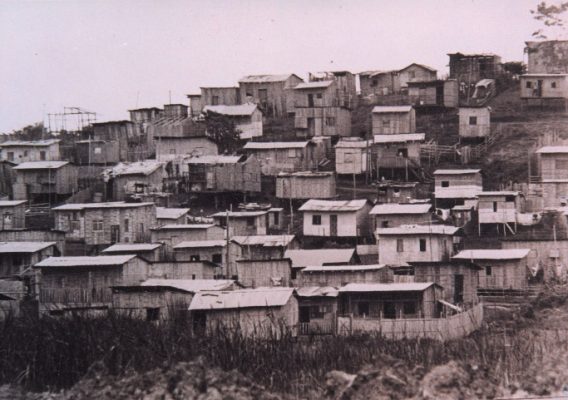‘The ruins of Rey are near Tehran!’ exclaimed the wayfarers in Sadegh Hedayat’s dark, opium-incensed novel of 1936, The Blind Owl. The fabled city of Rey, razed to the ground by the Mongol hordes in the thirteenth century, is only a short distance from the Iranian capital of Tehran. During Hedayat’s lifetime, and in the heady decades leading up to the 1979 Revolution, there were lesser known ruins even closer to home. Ruins brushed beneath the bloodstained rug of the last Shah, Mohammad Reza Pahlavi, invisible to the foreign diplomats, heads of state, and celebrities surrounding him, and to the affluent denizens of Tehran’s leafy northern suburbs. Shahr-e No (literally, ‘New City’) was a decrepit red light district, and a thorn in the side of a monarch with a penchant for bubbly, caviar, and Warhol. To some, places like Shahr-e No were a fact of life, a part of their quotidian existence on the margins of society. Others didn’t know they existed at all, and many of those who did, in the spirit of the Pahlavi era, denied such realities with vehemence.
Kaveh Golestan was not among their number. In the early seventies, while in his twenties, he spent a number of years visiting Shahr-e No, striking up a rapport with its inhabitants. Later, between 1975 and 1977, he captured the prostitutes who lived and worked there, in a series of photographs currently on view at Tate Modern’s Boiler House. The exhibition is notable for the importance of Golestan’s documentary work – it is also the first time an entire room at Tate Modern has been dedicated to the work of an Iranian artist. As well as the women of Shar-e No, the neighbourhood itself is also on display. In a vitrine, a map shows a district surrounded on all sides by walls, so as not to prove an eyesore. In Golestan’s photographs, the streets are filthy and bare, lined by brick apartment buildings, little aqueducts, and weary merchants.
Golestan was part of a small group of intellectuals and artists keenly aware of the disparities between the social strata in Iran – of the gap between the reality of life for many Iranians, and the image of Iran the Shah was trying so assiduously to present to the world. Golestan’s upbringing, no doubt, had something to do with his Weltanschauung. His father, the celebrated filmmaker Ebrahim Golestan, was an outspoken critic of the Pahlavis at a time when Iranians lived in fear and suspicion of SAVAK, the Shah’s secret police. In his film The Secrets of the Treasures of the Valley of Jinns (1974), for example, he lampooned the Shah’s bombastic 1971 celebrations of the 2,500th anniversary of the founding of the Persian Empire by Cyrus the Great. The event, sometimes known as the ‘greatest party ever held’, was thrown when poverty, illiteracy, and disease were ailing many ordinary Iranians (none of whom were on the guest list). Hush-hushing was not part of Ebrahim Golestan’s modus operandi.
Shahr-e No was run by small-time pimps, who served clientele from Tehran’s poorer southern neighbourhoods, and was by no means the only red light district of its kind. When Golestan took his photographs, prostitution, although rife, was forbidden. Yet according to Dr Kristin Soraya Batmanghelichi, the Pahlavi government helped regulate the industry, sending officials to Shar-e No to check for venereal disease among prostitutes. If you can’t put paid to it, they must have thought, you might as well try and contain it.
The photographs on view at Tate Modern are more or less uniform in their composition. Aside from a few fly-on-the-wall shots, they mostly consist of singular portraits of women looking, bleary eyed, into Golestan’s lens. Pin-ups of Iranian pop singers and film stars adorn the peeling wallpaper of their living quarters, which resemble those of beasts more than they do human beings. In one photograph, a woman swings about a pot of esfand, a herb commonly burned to ward off the evil eye. Another holds up her ID papers, bearing her name, Zari, and a studio photograph of herself as a young girl, as if trying to prove to Golestan that she exists. Elsewhere, he captures a deal in the making. A lanky young man in an alleyway cranes his head towards a woman with a hitched-up skirt. The shadow visible in the photograph – Golestan’s, perhaps – indicates that the transaction is taking place in broad daylight.
A decade prior to the completion of Golestan’s series, the Iranian film-maker Kamran Shirdel recorded the prostitutes of Shahr-e No, for his documentary Women’s Quarter (1965). In the spirit of his other documentaries, such as Women’s Prison (1965), and Tehran is the Capital of Iran (1966), he presented the harrowing circumstances of underprivileged and marginalised Iranians, living in a city often spoken of by the Shah as a sort of Central Asian Geneva. As Shirdel’s films show, seemingly little had changed in Tehran since the days of the Qajar dynasty, which ended in 1925, save a preference for more modern forms of execution (limestone having fallen out of vogue). In the many Qajar-era travelogues written by European diplomats, scholars, writers, and other sundry characters populating the chessboard of the Great Game, the portrait is more or less the same: dilapidated caravanserais, non-existent hygiene, ancient ruins used for target practice, rundown roads and crumbling bridges, bandits walled-up alive by the roadside, and everywhere, disease, hunger, and poverty.
The young Golestan was likely influenced by Shirdel’s films. Likely, too, that he turned to the work of the poet Forough Farrokhzad, who died in a car crash in 1967, and had been his father’s lover. During her short life, Farrokhzad secured her status as a modern Iranian icon. Aside from the feminist poetic oeuvre for which she is best known, she also experimented with film, as in the case of 1962’s The House is Black, for which she documented patients in a leper colony in western Iran.
Golestan’s photographs act as a foil to the pretensions of Tehran’s Pahlavi-era bourgeoisie – they also challenge popular Iranian notions of prostitution. In the Film Farsi flicks of pre-Revolution Iran, a typical plot involved a luti (a sort of tough guy-cum-gentleman) falling for a cabaret dancer, only to discover that she was a prostitute. Not to worry, though – after accompanying her paramour on a pilgrimage to the shrine of some saint or other, and the pesky pimp was dealt with, the couple would go on to lead a life of conjugal bliss. These prostitutes were often played by the late film star Forouzan. Typically buxom, and clad in miniskirts, they were presented to the masses as archetypal whores. Female entertainers were looked upon by many as immoral – and as such, when the word gigi (slang for prostitute) was uttered, it was more likely Forouzan who came to mind, than it was the likes of Zari.
Shortly after the founding of the Islamic Republic in 1979, Shahr-e No was set alight by fervent revolutionaries. To them, the idea of pop stars strutting their stuff on television was too much to bear, let alone a brothel in the epicentre of the hallowed Enghelab (Revolution). Today, in lieu of the prostitutes’ living quarters are a park and a hospital. Scant trace of Shahr-e No is visible. It is not known exactly how many prostitutes, like Zari, were burned alive.
